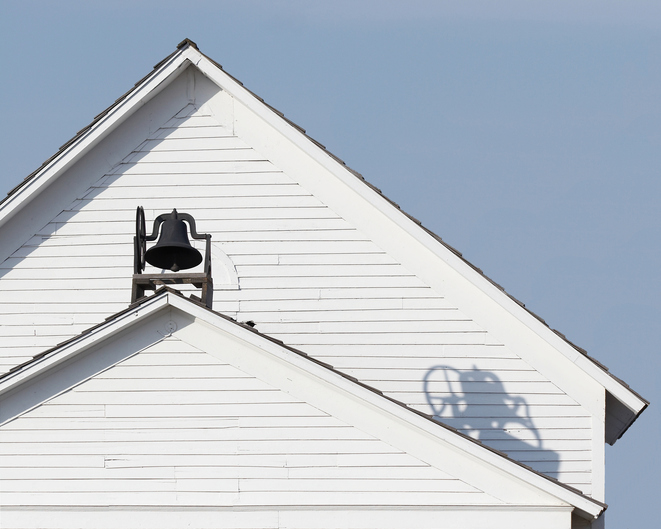Like many children who grew up in rural America during the 1900s, I attended that bit of Americana called the one-room schoolhouse. It was a traditional white, wood-framed structure with a school bell above the entrance. It stood at the edge of Mr. Morrison’s wheat field, hence its name, Morrison School. The property also included a well, coal shed, open field for games and two outhouses at the edge of the property — an ideal location during hot weather but not so ideal during a snow storm.
Each morning, a pail of water was placed on a sideboard with a tin cup. No one ever seemed to feel the need for more than one cup. A big Franklin potbelly stove in the middle of the classroom provided heat. It was a challenge to find the desk with the best proximity to that stove. If you were too close it was like sitting next to a bonfire, where one side of you turns red and the opposite side freezes. My favorite part of the room was its light fixtures. They were beautiful turn-of-the-century gas sconces. When electricity was installed, they apparently saw no need to spend good money on new fixtures so they just wired what they had.
The room was filled with a hodgepodge of scarred and well-worn desks that were acquired over the decades. I remember the time our teacher, Mr. Gates, accused my brother of carving his initials BD into his desk. Bill spiritedly maintained his innocence and swore that the initials had always been there, but Mr. Gates would have none of it. The next day my father was called to the school and, after closely inspecting the offending desk, stated that my brother was indeed telling the truth, that he had personally carved those letters in that desk forty years earlier.
If Mr. Gates was the model of the old schoolmaster who taught with an iron fist and a wood ruler, our next teacher was the model of creative instruction. At that time, women had to leave teaching once they married. However, finding teachers for rural schools was difficult, and, since Mrs. Sturgeon was a widow, they made an exception — and what an exception it was. Teaching all subjects for eight grades in one self-contained room was a daunting task. She used the diversity of the children’s ages and abilities as an asset rather than a problem. Students were taught in groups based on their ability and interest rather than their age. She taught us to be independent learners and encouraged us to tutor and support each other. On a nice day, the schoolyard was dotted with pairs of students listening to each other read or going over math problems together.
In hindsight, I realize that, in spite of our lack of basic supplies and modern amenities, we had actually received the most valuable educational gift one could possibly receive — the gift of a creative and imaginative teacher.




